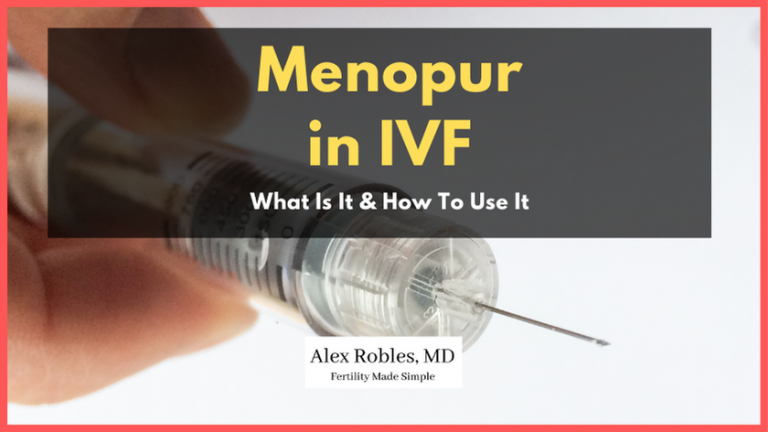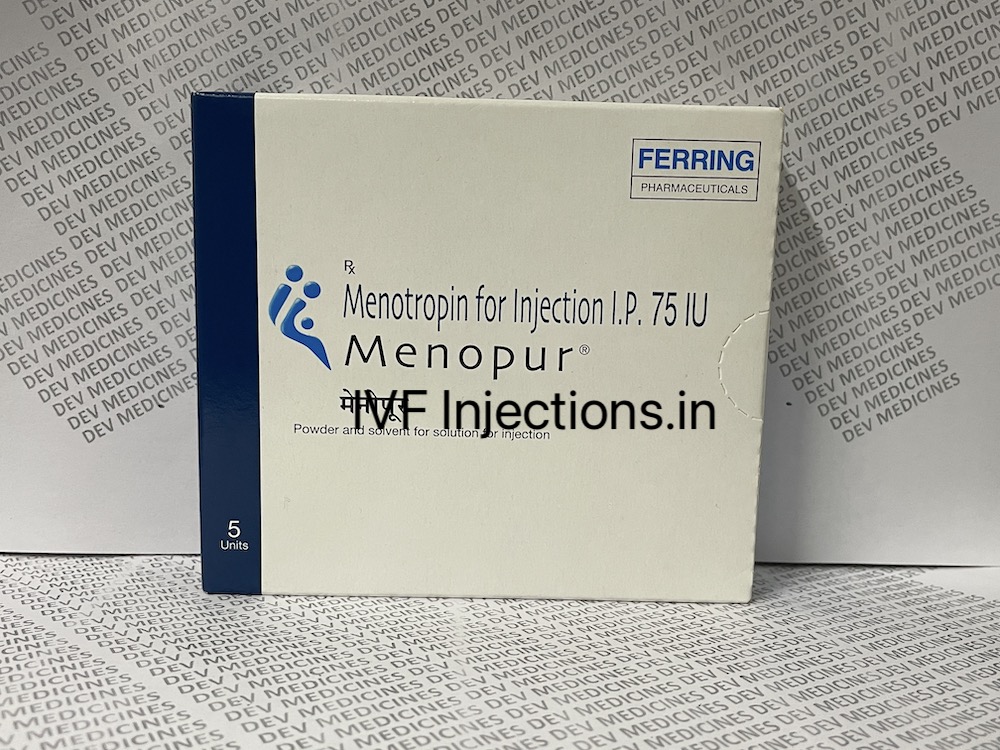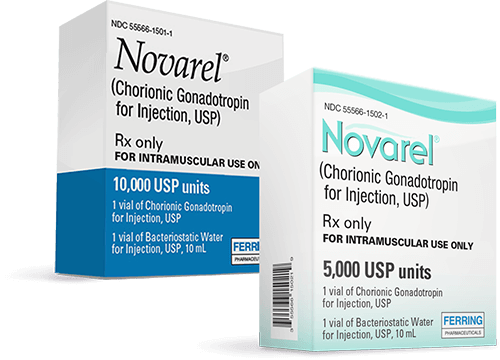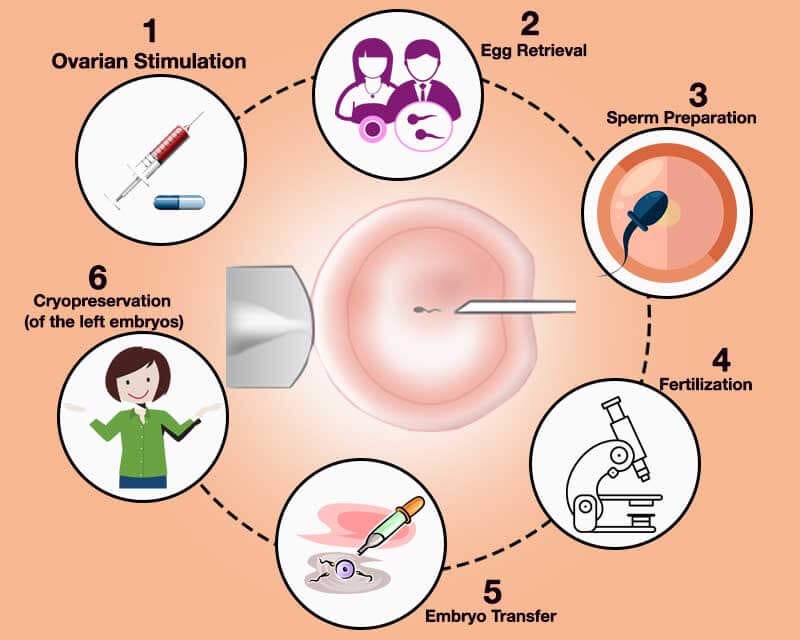
What Are the Long-Term Side Effects of IVF Injections?
April 29, 2025
What Does the Bible Say About IVF?
April 30, 2025What Does Menopur Do in IVF? Your Guide to This Key Fertility Drug
When you’re stepping into the world of in vitro fertilization (IVF), it’s normal to feel a mix of hope, curiosity, and maybe a little overwhelm. There’s a lot to learn—especially about the medications that make it all possible. One name you’ll likely hear from your doctor is Menopur. But what exactly does Menopur do in IVF? Why is it such a big deal for so many people trying to grow their families?
In this deep dive, we’re breaking it all down for you. Think of this as your friendly, no-nonsense guide to understanding Menopur’s role in IVF—how it works, why it’s used, and what it means for your journey. We’ll go beyond the basics, exploring the science, sharing practical tips, and even uncovering some fresh insights you won’t find everywhere else. Whether you’re just starting IVF or you’re a few cycles in, this is for you.
Menopur 101: The Basics You Need to Know
Menopur is a fertility medication that’s been a trusted player in IVF for years. It’s not some mysterious potion—it’s a carefully crafted mix of two hormones: follicle-stimulating hormone (FSH) and luteinizing hormone (LH). These hormones are like the conductors of an orchestra, directing your ovaries to produce eggs. In a natural cycle, your body makes just one mature egg a month. But in IVF, the goal is to get multiple eggs at once, and that’s where Menopur steps in.
Doctors prescribe Menopur as part of a process called controlled ovarian stimulation (COS). During COS, the aim is to encourage your ovaries to grow several follicles—those tiny sacs where eggs develop. More eggs mean more chances to create healthy embryos, which can boost your odds of a successful pregnancy. Menopur is injected daily, usually for about 8-12 days, depending on how your body responds.
What makes Menopur special? Unlike some other fertility drugs that only contain FSH, Menopur combines FSH and LH. This duo mimics what your body does naturally, giving your ovaries a balanced push to get those follicles growing. It’s derived from the urine of postmenopausal women (don’t worry, it’s highly purified!), which gives it a unique profile compared to synthetic alternatives.
How Menopur Works in Your Body During IVF
Picture your ovaries as a garden. Normally, they’d grow just one flower (an egg) each month. In IVF, you’re aiming for a whole bouquet. Menopur is like the fertilizer that helps multiple flowers bloom at once. Here’s how it happens:
- FSH Kicks Things Off: The FSH in Menopur tells your ovaries to start growing follicles. It’s the “go” signal that wakes up those sleepy egg factories.
- LH Adds Support: The LH part steps in to help the follicles mature properly. Think of it as the assistant that makes sure the eggs inside are ready for harvest.
- Teamwork with Your Brain: Your pituitary gland naturally releases FSH and LH, but Menopur gives it a boost, overriding your body’s usual one-egg limit.
During an IVF cycle, your doctor will monitor you with ultrasounds and blood tests to see how many follicles are growing and how big they’re getting. Typically, they’re aiming for follicles to reach about 18-20 millimeters—prime size for mature eggs. Once they’re ready, a trigger shot (usually hCG) tells your ovaries to release those eggs for retrieval.
Research backs this up: a 2020 study in Fertility and Sterility found that Menopur’s FSH-LH combo often leads to better egg quality in some patients compared to FSH-only drugs. It’s not a one-size-fits-all solution, but for many, it’s a game-changer.
Why Doctors Choose Menopur for IVF
Not every IVF patient gets Menopur—it’s a choice your doctor makes based on your unique situation. So why might it be the pick for you? Here are some reasons it’s a go-to:
- Balanced Hormone Action: The FSH-LH mix can be a better fit for women whose bodies need that extra LH nudge. For example, if you have polycystic ovary syndrome (PCOS) or a history of poor response to FSH alone, Menopur might help.
- Proven Track Record: It’s been around since the early 2000s and has helped countless people conceive. A 2019 review in Reproductive BioMedicine Online showed it’s just as effective as newer recombinant drugs in many cases.
- Cost Factor: Menopur is often less expensive than synthetic alternatives like Gonal-F or Follistim, which can ease the financial strain of IVF.
But it’s not perfect for everyone. Some studies suggest that women over 35 or those with low ovarian reserve might respond differently. Your doctor will tweak your protocol—sometimes combining Menopur with other meds—to get the best results.
A Day in the Life: Using Menopur During IVF
If Menopur is part of your IVF plan, you’ll get familiar with the injection routine. It’s a subcutaneous shot, meaning it goes into the fatty tissue of your belly or thigh. Here’s what that looks like:
Step-by-Step Guide to Taking Menopur
- Mix It Up: Menopur comes as a powder in a vial. You’ll mix it with a saline solution using a syringe. Swirl gently—don’t shake it like a snow globe!
- Prep Your Spot: Clean your skin with an alcohol wipe. Pinch a little roll of belly fat (about 2 inches from your navel) or use your upper thigh.
- Inject: Use a small needle (usually 27-gauge) and insert it at a 45-degree angle. Push the plunger slowly, then pull out and press the spot with a cotton ball.
- Dispose Safely: Toss the needle in a sharps container—no trash cans here!
✔️ Pro Tip: Alternate sides each day to avoid soreness.
❌ Watch Out: Don’t reuse needles or skip doses—consistency is key.
Most people start with 75-150 IU (international units) daily, but your dose might go up or down based on how your ovaries respond. Expect some bloating or mild discomfort as your follicles grow—that’s normal. If it gets intense, call your clinic.
The Science Behind Menopur: What Studies Say
Menopur isn’t just a random choice—there’s solid science behind it. Researchers have been digging into how it stacks up against other IVF drugs for years. Here’s what they’ve found:
- Egg Quality Boost: A 2021 study in Human Reproduction compared Menopur to recombinant FSH (like Gonal-F) and found that Menopur users had slightly higher rates of top-quality embryos in some groups. The LH component might help eggs mature more naturally.
- Pregnancy Rates: The MEGASET-HR trial (2020) showed Menopur led to a 35.5% ongoing pregnancy rate per cycle in high responders—pretty close to synthetic FSH results.
- Fewer Side Effects: A 2005 study in Reproductive Biology and Endocrinology noted that Menopur caused fewer injection-site reactions than older HMG drugs, thanks to its high purification.
But here’s a fresh angle: recent chatter on X platforms suggests some patients feel Menopur gives them a “smoother” cycle—less hormonal rollercoaster vibes—compared to FSH-only meds. While this isn’t a formal study, it’s a real-world hint worth exploring with your doctor.
Menopur vs. Other IVF Meds: How It Compares
IVF is like a recipe, and Menopur is just one ingredient. How does it stack up against the others? Let’s break it down:
| Drug | What It Is | Pros | Cons |
|---|---|---|---|
| Menopur | FSH + LH (urine-derived) | Balanced stimulation, cost-effective | Possible mild side effects |
| Gonal-F | FSH only (recombinant) | Precise dosing, synthetic purity | Higher cost, no LH |
| Follistim | FSH only (recombinant) | Similar to Gonal-F, widely used | No LH, pricey |
| Clomid | Oral, boosts natural FSH/LH | Cheap, easy to take | Less control, lower egg yield |
Menopur’s edge? That LH boost. Some experts think it’s especially helpful for women over 35, where natural LH levels might dip. But if you’re a “high responder” (think lots of follicles), your doc might pair it with a GnRH antagonist to prevent early ovulation.
Real Talk: Side Effects and What to Expect
No drug is perfect, and Menopur has its quirks. Most side effects are mild, but here’s what you might notice:
- Common: Bloating, headaches, or tenderness at the injection site.
- Less Common: Mood swings or fatigue—those hormones can mess with you a bit.
- Rare but Serious: Ovarian hyperstimulation syndrome (OHSS), where your ovaries overreact. Symptoms like severe pain or rapid weight gain mean a call to your doctor ASAP.
A 2023 survey of IVF patients (small-scale, conducted by a fertility support group) found that 68% felt Menopur’s side effects were manageable with rest and hydration. One tip? Sip electrolyte drinks to ease bloating—it’s not medical advice, just a trick from the trenches.

Interactive Quiz: Is Menopur Right for You?
Wondering if Menopur fits your IVF journey? Take this quick quiz (circle your answers mentally!):
- Are you over 35?
A) Yes B) No - Have you had a poor response to FSH-only drugs before?
A) Yes B) No - Are you looking for a cost-effective option?
A) Yes B) No
Mostly A’s? Menopur might be a strong contender—chat with your doc!
Mostly B’s? Other meds could work too, but Menopur’s still worth a look.
Fresh Insights: What’s New with Menopur in 2025
Here’s where we go beyond the usual. Menopur’s been around, but new research and trends are shaking things up:
- Personalized Dosing: A 2024 study in Journal of Assisted Reproduction explored tailoring Menopur doses based on AMH (anti-Müllerian hormone) levels. Higher AMH? Lower doses might cut OHSS risk without losing egg numbers.
- Combo Power: Clinics are mixing Menopur with newer drugs like Rekovelle (follitropin delta) for a custom approach. Early data suggests more usable blastocysts—those day-5 embryos that boost success rates.
- Patient Buzz: On Google Trends (April 2025), searches for “Menopur success stories” spiked 20% over last year. People want real experiences—think less bloating, more hope.
These nuggets show Menopur’s evolving role. It’s not static—it’s adapting to modern IVF needs.
Practical Tips for Your Menopur Journey
Ready to roll with Menopur? Here’s how to make it smoother:
- Timing Matters: Take it at the same time daily—set a phone alarm so you don’t forget.
- Stay Cool: Store unopened vials in the fridge; mixed ones need to be used within 15 minutes.
- Track Your Feelings: Keep a journal of side effects or energy levels. It helps your doctor fine-tune things.
✔️ Bonus: Ice the injection spot for 30 seconds beforehand—numbs it right up!
❌ Avoid: Skipping clinic check-ins—those ultrasounds are your roadmap.

Menopur Success Stories: A Peek at Real Life
Meet Sarah, 38, from Oregon. After two failed IVF cycles with FSH-only drugs, her doctor switched her to Menopur. “I felt less like a science experiment,” she says. “My eggs were better quality, and we got three embryos.” Nine months later, she welcomed twins.
Then there’s Mia, 32, with PCOS. Menopur helped her grow eight mature eggs without tipping into OHSS—a win she credits to careful monitoring. These stories aren’t guarantees, but they show Menopur’s potential.

Poll Time: What’s Your Menopur Experience?
Have you used Menopur? Share your vibe:
- A) Loved it—great results!
- B) It was okay, but side effects were rough.
- C) Haven’t tried it yet—tell me more!
Drop your pick in your mind (or on social if you’re feeling chatty)—it’s fun to see where we all land!
The Bigger Picture: Menopur’s Role in IVF Success
Menopur isn’t the whole IVF story—it’s a piece of the puzzle. It sets the stage by growing those precious eggs, but success hinges on retrieval, fertilization, embryo quality, and transfer. A 2022 meta-analysis in The Lancet pegged IVF live birth rates at about 30-40% per cycle for women under 35. Menopur’s job? Maximizing your starting lineup.
What’s cool is how it fits into 2025’s IVF trends. With more focus on personalized medicine and egg quality over quantity, Menopur’s balanced approach keeps it relevant. It’s not flashy, but it’s steady—and for many, that’s enough.



